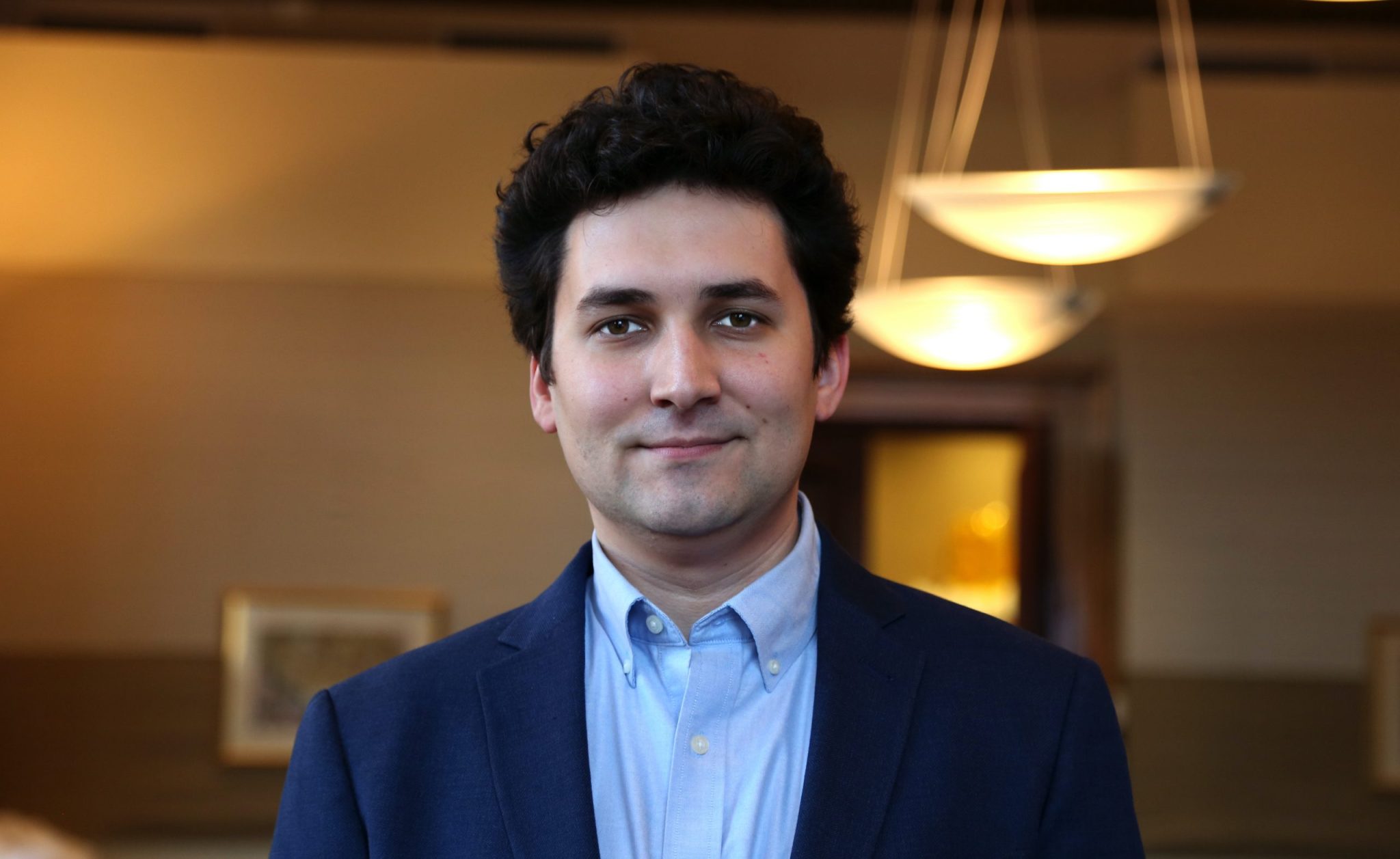This report highlights and analyzes key trends and takeaways from data collected by the Hamilton 2.0 Dashboard during the previous month. Unlike ASD’s weekly Hamilton reports, which analyze the main topics and themes promoted by monitored Russian and Chinese actors and entities, this report focuses on the specific Russian, Chinese, and Iranian accounts, outlets, and pieces of content that received the most engagement during the studied period. The report analyzes data collected on Twitter, YouTube, Facebook, and state-sponsored websites. A complete list of monitored accounts and outlets and the methodology behind the dashboard can be found on ASD’s methodology and FAQs page.
Top Takeaways
- Social media companies’ efforts to limit the spread of Russian state media outlets dented the popularity of affiliated accounts in May. However, despite a dip in followers last month, RT’s Spanish language outlets and individuals affiliated with those outlets enjoyed high levels of engagement, pointing to the continued appeal of Russian state media in the Global South.
- On Twitter, China’s key “wolf warrior” diplomats outperformed many of China’s major state media accounts. On Facebook, however, Chinese diplomatic and government Pages have yet to attract the same audience, with Chinese state media Pages significantly outperforming their diplomatic counterparts.
- HispanTV, Iran’s Spanish-language media outlet that was banned from Twitter, Facebook, and YouTube has found some success pushing its content under social media accounts branded as “Nexo Latino.” The effort is likely in violation of the platforms’ ban evasion policies.
Russia
Twitter Metrics
This section analyzes the top accounts affiliated with and outputs from Russian state media and diplomatic/government Twitter accounts in May 2022. Non-English Tweets are displayed in English using Microsoft’s Translator API. Engagement metrics are determined using Twitter’s public API and are up to date as of early June 2022.
In total, monitored Russian accounts posted 77,316 tweets in May. Those Tweets were retweeted and liked1,091,381 and 3,424,678 times during the month, respectively.
Most Retweeted Accounts
The following charts display the most retweeted Russian state media and Russian diplomatic/government accounts during the past month. Favorites and total tweets are also displayed.
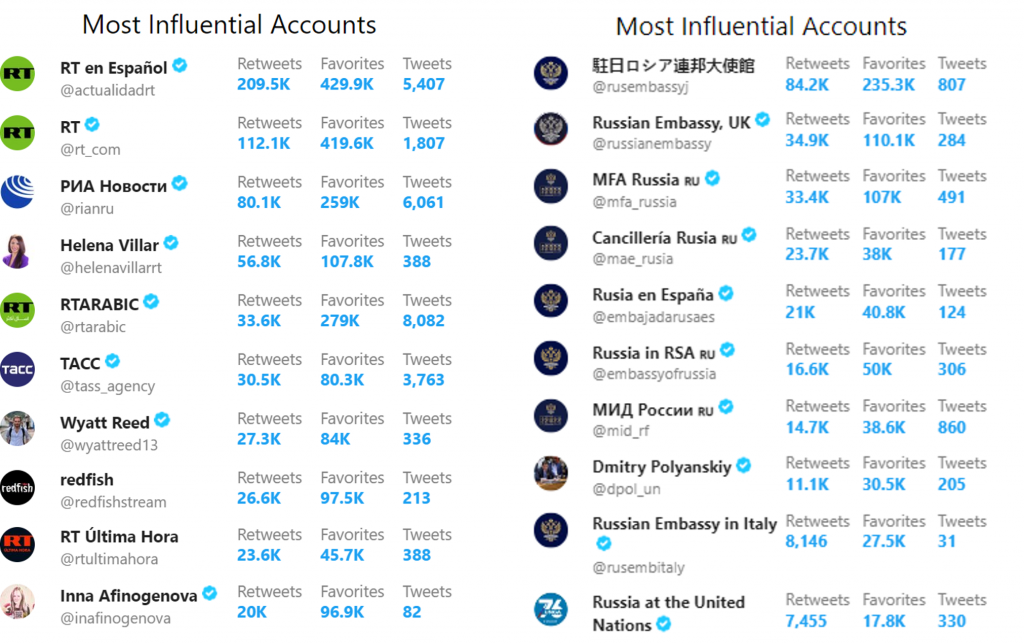
Figure 1: The most retweeted and liked Russian state media (left) and diplomatic/government accounts (right) in May 2022.
The most influential Russian state media accounts in May underscore the wide reach of Russia’s Spanish-language content and the importance of individual journalists in the Kremlin’s propaganda apparatus. Four of the top ten most retweeted accounts post in Spanish, with RT en Español leading all accounts in retweets and likes. Three of the top ten most amplified accounts were Moscow-affiliated journalists, who have built online brands stronger than some media outlets.
On the government side, Russia’s Embassy in Japan continued to drive a massive amount of engagement, outperforming all other government accounts as well as media outlets like RIA Novosti and Tass. The Japanese Embassy posts often, spreading conspiracies and attacking anyone who opposes the Kremlin’s official lines. Outside of Japan, five of the top ten most retweeted accounts post in English, which shows the Kremlin’s sway with English-speaking audiences despite state media bans or restrictions in many countries in the West.
Most Followers Gained
The following charts display the state media and diplomatic/government accounts with the largest change in followers from May 1 to May 31, 2022.
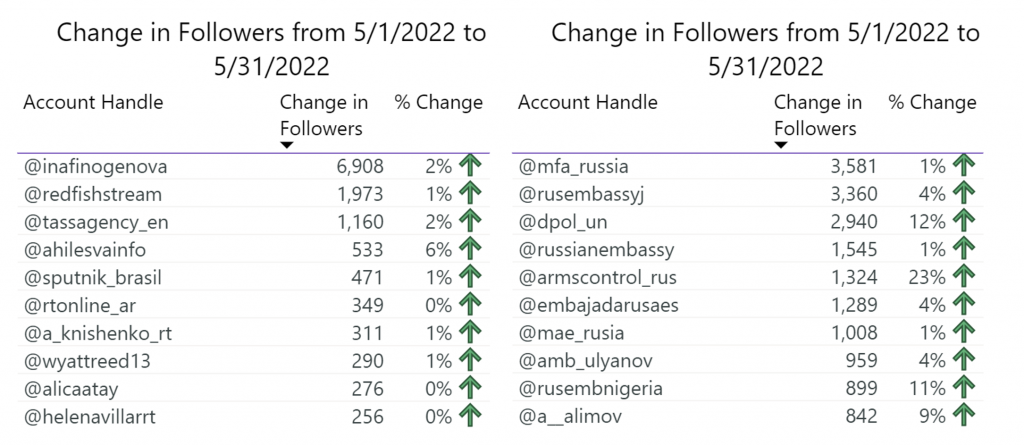
Figure 2: The Russian state media and diplomatic/government accounts with the largest change in followers in May 2022.
The Russian state media-affiliated account with the largest follower increase last month was for a journalist, Inna Afinogenova, who recently quit RT and has criticized the war in Ukraine. She still carries a state media label from Twitter and pushes some Kremlin-aligned talking points, including attacks on Ukrainian Nazis and U.S. imperialism. Afinogenova’s resignation is in keeping with other resignations from Russian state media personalities, like Anissa Naouai from Maffick Media, who have distanced themselves from the war but continue to share anti-Western content with large audiences.
Government accounts continued to build their Twitter presence in May. The Ministry of Foreign Affairs and the Japanese Embassy gained more than 3,000 followers. A Russian representative to the UN, Dmitry Polyanskiy, who is arguably the most aggressive Russian diplomat online, added 2,940 followers. Russian officials and diplomatic accounts have become more assertive and more visible on Twitter since the war began.
Most Mentioned Countries
The following chart displays the countries most mentioned in Tweets during the past month. Special territories and regions (for example, Hong Kong and the EU) are included as individual entities in the country data. The chart aggregates all mentions of a country, including alternative country names, under that country’s official name (for example, mentions of US, USA, U.S., and America are all included in tabulations for the United States of America).

Figure 3: The most mentioned countries in tweets from Russian state media (left) and diplomatic/government accounts (right) in May 2022.
Since the start of the war, Kremlin-linked accounts consistently mention Russia, Ukraine, and the United States the most, with variations among the other top ten countries depending on the news cycle. In May, Russian state media took aim at the European Union, making it the fourth most referenced entity as media outlets bashed the bloc for imposing sanctions on Russia and highlighted issues with rising gas prices. Turkey, Finland, and Sweden earned spots among the most mentioned countries thanks to Russian state media’s push to undermine Finland and Sweden’s NATO bids by emphasizing Turkey’s opposition to their accession.
Government accounts showed different messaging priorities. Turkey, Finland, and Sweden did not crack the top ten most mentioned countries. While diplomatic accounts did attack Russia’s competitors, they also emphasized Moscow’s allies. Belarus and Kazakhstan were among the most referenced states. China is absent from the list of most mentioned countries by Russian officials—a notable omission given Beijing and Moscow’s declaration of a partnership with “no limits.”
Most Retweeted Accounts
The following charts display the accounts that have been retweeted most often by accounts monitored on the dashboard during the past month. The first chart displays the monitored accounts most retweeted by other monitored accounts (for example, a diplomatic account retweeted by other diplomatic and state media accounts). The second chart displays the non-monitored accounts most retweeted by monitored accounts (for example, an independent media outlet or unaffiliated individual retweeted by diplomatic and state media accounts). Occasionally, accounts that should be monitored by the dashboard appear in the non-monitored retweet list, either because those accounts are new or because they were not previously identified. Those accounts are subsequently added to the relevant Hamilton account list.

Figure 4: Monitored Russian media and diplomatic/government accounts most retweeted by other monitored Russian media and diplomatic/government accounts in May 2022.
Russia’s Ministry of Foreign Affairs continues to be the centerpiece of Moscow’s wartime propaganda. Monitored Russian accounts retweeted it nearly three times more often than the next closest Kremlin-affiliated account. Russia’s UN account received the second most retweets, underscoring how Russian accounts rely on the UN as both a source of legitimacy and an outlet for propaganda. Government accounts showed a high degree of coordination in May, accounting for nine of the ten most retweeted accounts.
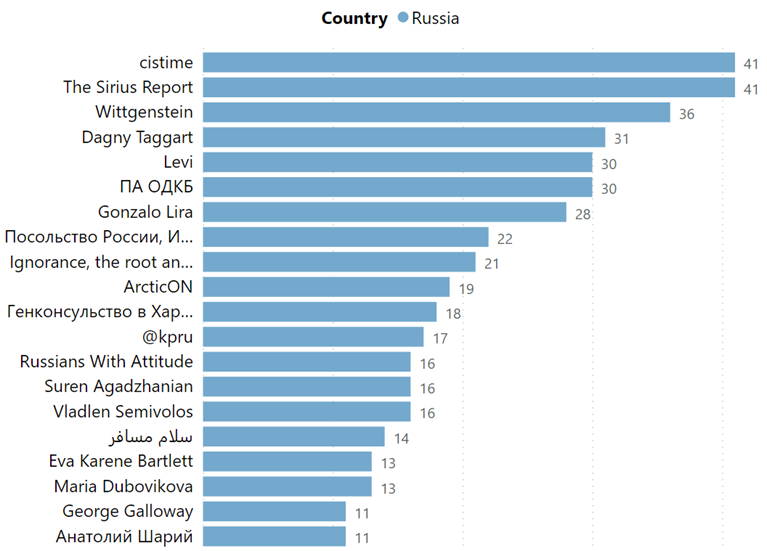
Figure 5: Non-monitored accounts most retweeted by monitored Russian media and diplomatic/government accounts in May 2022.
Russian propagandists amplified a wide range of fringe accounts in May. The Serious Report tied for the most retweeted account by monitored Russian accounts. It’s run by a person under the pseudonym “London Paul,” who claims to have a PhD in physics and regularly spreads pro-Kremlin views to his 64,600 followers. The conspiracy theorist Eva Bartlett, Chilean-American novelist Gonzalo Lira, an account called “Ignorance, the root and stem of all evil,” and an unverified account for the Russian-spearheaded Commonwealth of Independent States also appear on the list.
Most Retweeted Tweets
The following charts display the Tweets made by monitored accounts that have received the most retweets during the previous month. Non-English Tweets are displayed in English using Microsoft’s Translator API.

Figure 6: The most retweeted tweets from Russian state media accounts in May 2022.
Four out of the five most retweeted posts by Russian state media accounts in May criticized the United States, critiquing Washington’s foreign policy and system of governance. Four of those tweets also came from journalists labeled by Twitter as Russia state media, which highlights the reach that individual pundits can have on the platform.
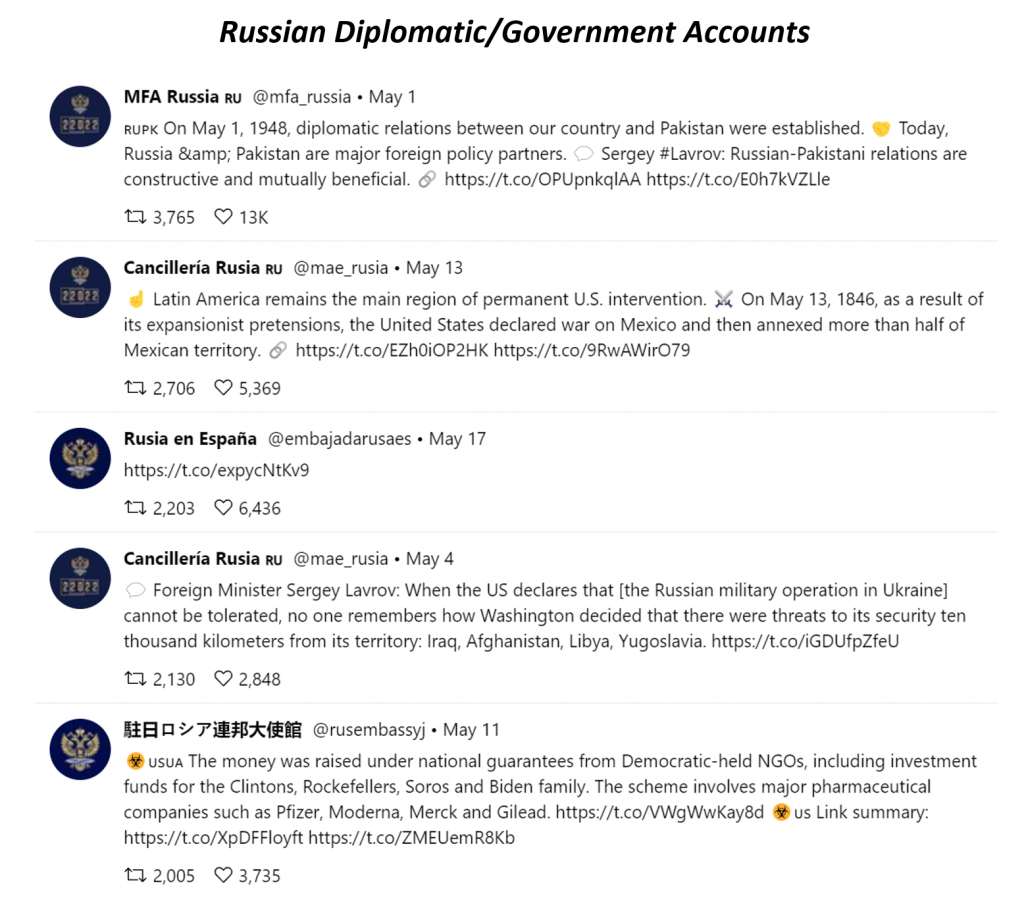
Figure 7: The most retweeted tweets from Russian diplomatic/government accounts in May 2022.
Three of the five most retweeted posts by Russian government accounts also took aim at the United States. One attacked U.S. policy in Latin America, another chided Washington for hypocrisy, and the third promoted the conspiracy theory the United States was operating bioweapons labs in Ukraine funded by Democrats and pharmaceutical companies. Only one of the top five posts attacked Ukraine.
Facebook Metrics
This section provides a summary analysis of Russian state media and diplomatic/government Pages on Facebook during the previous month. Data is sourced from CrowdTangle, a Facebook-owned data analysis tool that provides insights into public content posted to Facebook. (NOTE: CrowdTangle data will be incorporated into the public dashboard in the summer of 2022.)
Most Facebook Interactions
The following chart displays the Russian state media and diplomatic/government Pages on Facebook with the most interactions (reactions, comments, and shares) during the previous month. Though sorted by interactions, the chart also displays the average number of posts per day, page followers, and interaction rates (a calculation of total interactions divided by the number of posts and the number of followers of a Page), all of which are important metrics to contextualize the results.

Figure 8: Russian state media pages with the most total interactions on Facebook in May 2022.
RT Arabic’s Facebook page remained the Kremlin’s most successful account, generating 2.56 million interactions in May. The next best performing pages, RT and RT en Español, only brought in 1.03 million interactions. After those three pages, though, Russian state media has struggled on Facebook. Not a single other page generated above 250,000 interactions last month.

Figure 9: Russian diplomatic pages with the most total interactions on Facebook in May 2022.
The Facebook page for Russia’s Ministry of Foreign Affairs earned the most interactions in May, pulling in over 200,000 engagements. Russian diplomatic accounts in Asia made up five of the ten most interacted with Facebook pages. That’s a large shift from Twitter, where only one diplomatic account from Asia ranked among the top ten most influential.
Facebook: Pages with the Largest Percentage Growth in Followers
The following chart displays the Russian state media and diplomatic/government Pages with the largest percentage growth in followers during the previous month.
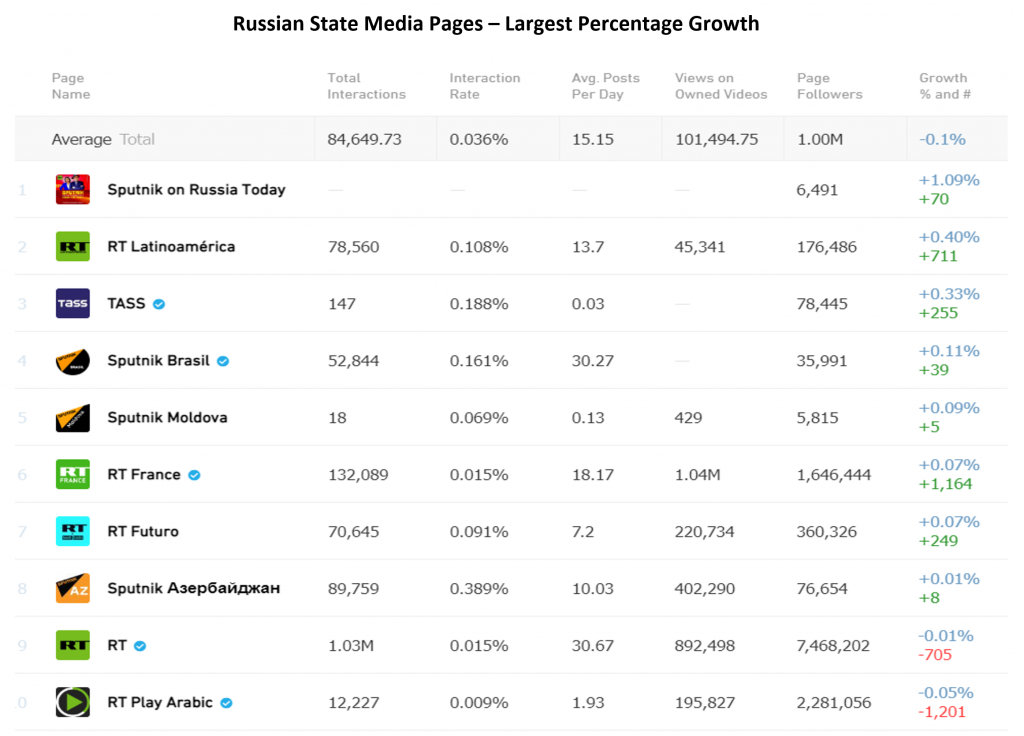
Figure 10: Russian state media pages with the largest percentage growth in followers on Facebook in May 2022.
Monitored Russian state media pages on average lost Facebook followers in May. Only eight of the 59 monitored pages gained followers. Many of the biggest pages lost significant numbers, including RT Arabic, which isn’t pictured on the graph above because it lost more than 15,000 followers. These low follower numbers reflect Facebook’s aggressive policies toward Russian state media since the war in Ukraine broke out.
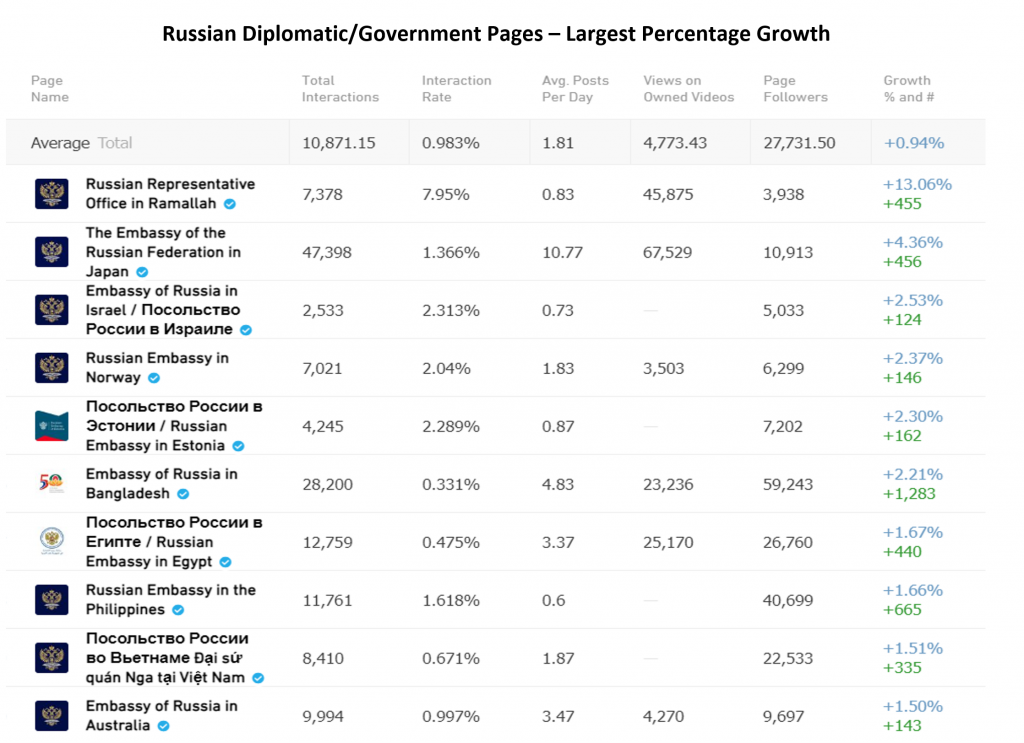
Figure 11: Russian diplomatic and government pages with the largest percentage growth in followers on Facebook in May 2022.
Unlike Russian state media, Russian diplomats on Facebook continue to steadily grow their audience. The average Russian government Facebook page saw 1 percent growth in May. While these numbers are modest, with most accounts only adding hundreds of followers instead of thousands, it indicates that there’s increased interest in messages delivered by Russian diplomats.
Facebook: Posts with the Most Comments (by Total Interactions)
The following posts received the most comments on Russian state media and Russian diplomatic/government Facebook Pages during the previous month. Posts are segmented by all Russian state media pages, Russian state media Pages specifically targeting audiences in the United States, and Russian diplomatic/government Pages.
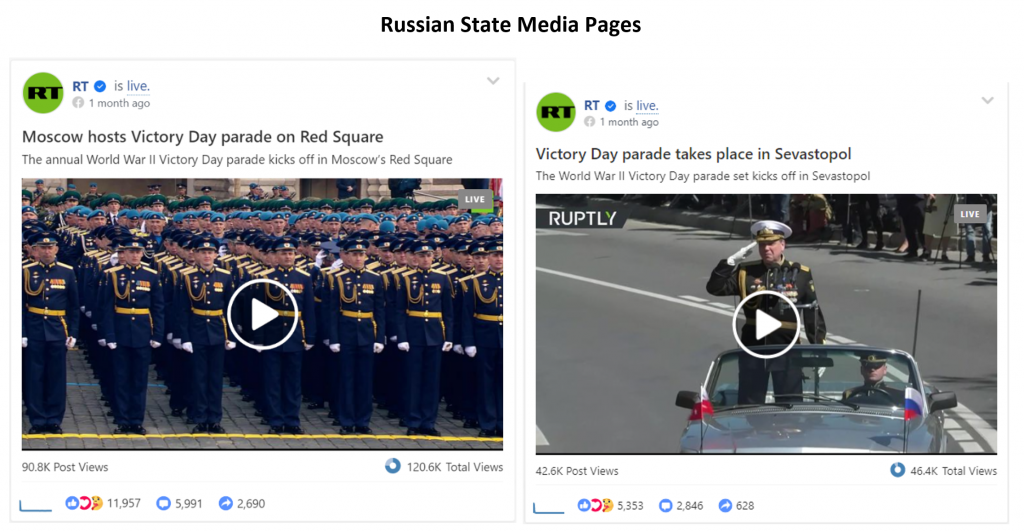
Figure 12: The top two most commented posts on Russian state media Pages in May 2022.
Kremlin-linked media’s most commented on Facebook posts last month highlight Russia’s military might, including a video of Russia’s Victory Day parade in Sevestopol, Crimea.

Figure 13: The top two most commented posts on Russian state media U.S.-focused Pages in May 2022.
When you zoom in on U.S.-focused pages, the most commented on posts bash the United States for spending money on its military instead on programs that would improve living standards. The left-wing page Redacted Tonight capitalized on popular interest in the Depp-Heard trail to spread its message against U.S. military funding.
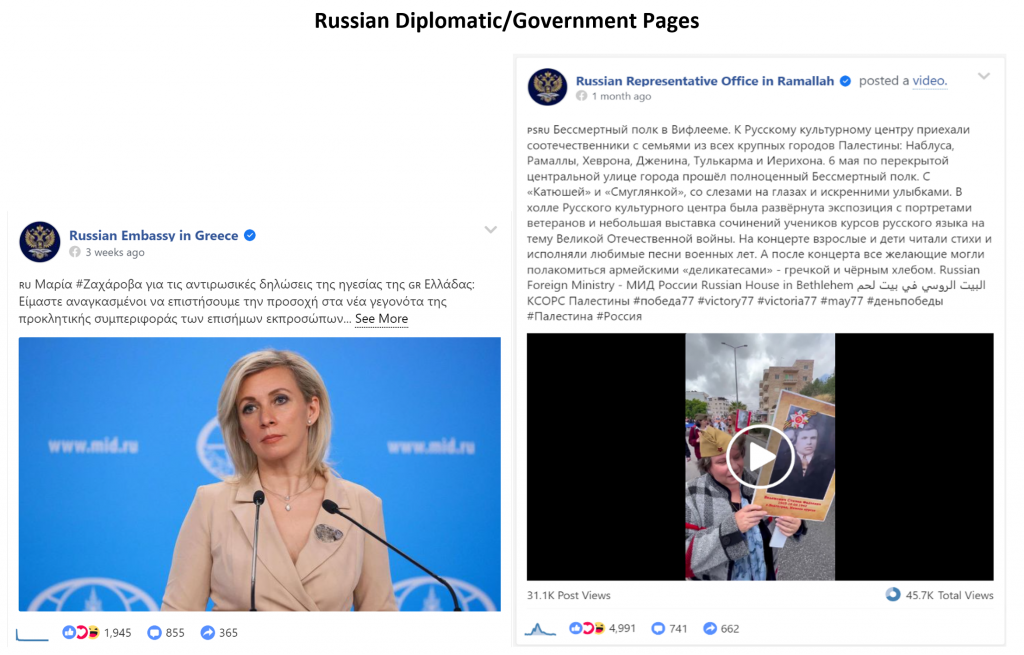
Figure 14: The top two most commented posts on Russian diplomatic/government Pages in May 2022.
The most commented on Russian government posts were from the Russian embassy in Greece and Russia’s representative office in Ramallah, Palestine. The former lambasted Greek Prime Minister Mitsotakis for criticizing Russia’s invasion of Ukraine during a visit to Washington, which MFA spokesperson Maria Zakharova denounced as “provocative behavior.” The latter highlighted a celebration of the “Great Patriotic War” hosted by the Russia House in Bethlehem.
China
Twitter Metrics
This section analyzes the top accounts affiliated with and outputs from Chinese state media and diplomatic/government Twitter accounts in May 2022. Non-English Tweets are displayed in English using Microsoft’s Translator API. Engagement metrics are determined using Twitter’s public API and are up to date as of early June 2022.
In total, monitored Chinese accounts posted 87,145 tweets in May. Those Tweets were retweeted and liked, respectively, 499,442 and 1,892,285 times during the month.
Most Retweeted Accounts
The following charts display the most retweeted Chinese state media and Chinese diplomatic/government accounts during the past month. Favorites and total tweets are also displayed.
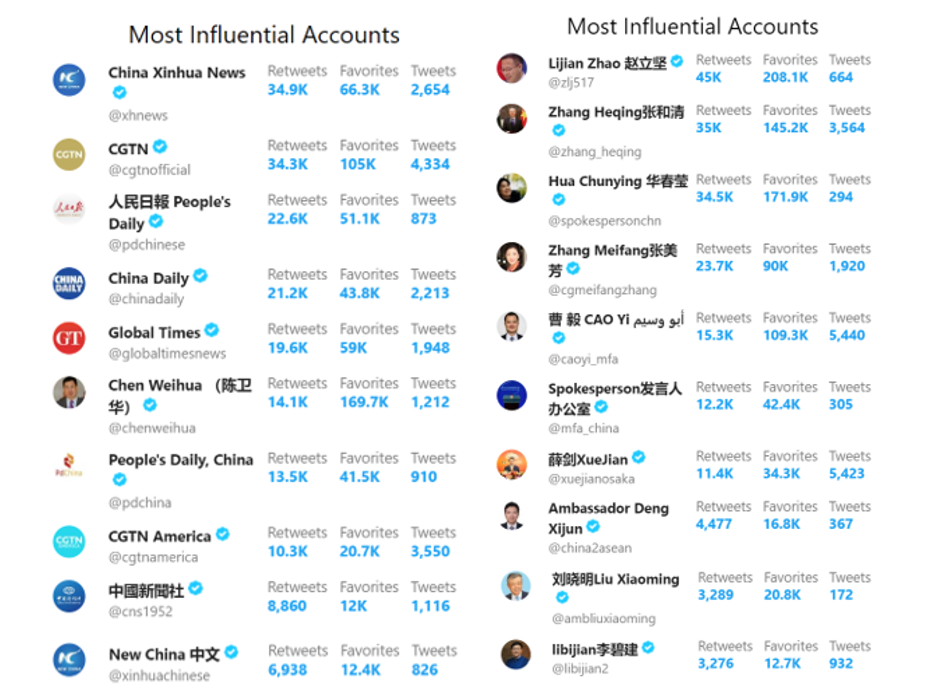
Figure 15: The most retweeted and liked Chinese state media (left) and diplomatic/government accounts (right) in May 2022
The top seven most retweeted diplomatic accounts all drew more than 10,000 retweets in May. However, those accounts are not created equal. Zhao Lijian, Hua Chunying, and the Ministry of Foreign Affairs’ (MFA) spokesperson account are the apex of China’s international messaging. In fact, Zhao and Hua are both MFA spokespeople – with Hua also being Assistant Foreign Minister – meaning that those three accounts are essentially different facets of the same entity. As a result of their high position in MFA hierarchy, they are able to land in the top ten while only publishing a few hundred tweets in the month.
Contrast this with the other four accounts in the top seven. They belong to a somewhat disparate group of Chinese diplomats: Zhang Heqing is a cultural counselor in Pakistan, Zhang Meifang is Consul in Belfast, Cao Yi is Consul in Beirut, and Xue Jian is Consul in Osaka. None of the consuls are based in known centers of power, they owe a large part of their popularity to the large volume of content – each account pushed thousands of tweets over the course of May – they broadcast on Twitter. And while the data above does not show the narratives they promote, weekly Hamilton reports show that they consistently produce some of the most abrasive Chinese propaganda.
Most Followers Gained
The following charts display the state media and diplomatic/government accounts with the largest change in followers from May 1 to May 31, 2022.
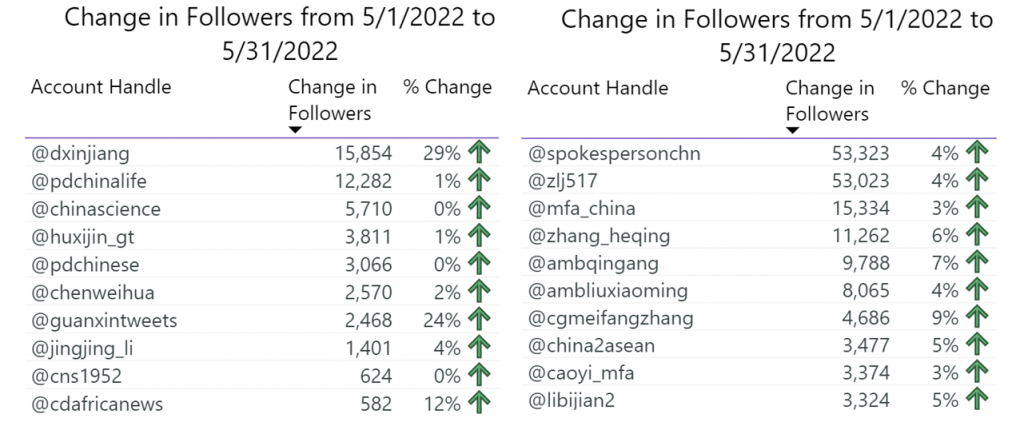
Figure 16: The Chinese state media and diplomatic/government accounts with the largest change in followers in May 2022
Individual journalists and accounts ostensibly promoting Chinese culture saw the largest growth among state media accounts in May. The rapid growth of “Discover Xinjiang” (@dxinjiang), an account essentially meant to whitewash the CCP’s human rights’ abuses in the region by highlighting its touristic assets, is consistent with Chinese propagandists’ ceaseless efforts to obfuscate the repression of Xinjiang’s Uyghur minority. Two of China’s most aggressive state media personalities, Chen Weihua, China Daily’s EU bureau chief, and Hu Xijin, the former editor in chief of the ultra-nationalist Global Times tabloid and now a “commentator,” speak to the continued appeal, at least as judged by Twitter metrics, of China’s more combative pundits.
On the diplomatic side, six of the seven accounts highlighted above also were among the most retweeted accounts in May. Posting high volumes of particularly incendiary content seems to yield results, as the consul general in Belfast, a regular promoter of conspiracy theories and hostile anti-Western rhetoric, gained a larger percentage of followers than the Chinese ambassador to the United States, Qin Gang. The largest gains, however, came from China’s two most prominent diplomatic accounts—Hua Chunying and Zhao Lijian.
Most Mentioned Countries
The following chart displays the countries most mentioned in Tweets during the past month. Special territories and regions (for example, Hong Kong and the EU) are included as individual entities in the country data. The chart aggregates all mentions of a country, including alternative country names, under that country’s official name (for example, mentions of US, USA, U.S., and America are all included in tabulations for the United States of America).

Figure 17: The most mentioned countries in tweets from Chinese state media (left) and diplomatic/government accounts (right) in May 2022
The most mentioned countries and territories from monitored diplomatic and state media accounts reflected the global attention on the war in Ukraine as well as more specific Chinese interest in Hong Kong, Taiwan, and Japan. State media’s focus on Finland was connected to the country’s accession to NATO, which received critical attention from state-backed Chinese outlets.
Chinese diplomats focus on Pakistan can be explained by three factors. First, Pakistan-based cultural counsellor Zhang Heqing is one of the entire Chinese network’s most prolific accounts, averaging over 1,000 tweets a week in May. Second, MFA spokesperson Zhao Lijian, another key node in the Chinese propaganda network on Twitter, used to be based in Pakistan and has kept a fondness for his former host-country. Last, and perhaps most importantly, Pakistan and China share a mutual interest in containing India’s influence, which has brought both countries very close economically and politically, a fact reflected in the MFA’s tweeting patterns.
Most Retweeted Accounts
The following charts display the accounts that have been retweeted most often by accounts monitored on the dashboard during the past month. The first chart displays the monitored accounts most retweeted by other monitored accounts (for example, a diplomatic account retweeted by other diplomatic and state media accounts). The second chart displays the non-monitored accounts most retweeted by monitored accounts (for example, an independent media outlet or unaffiliated individual retweeted by diplomatic and state media accounts). Occasionally, accounts that should be monitored by the dashboard appear in the non-monitored retweet list, either because those accounts are new or were not previously identified. Those accounts are subsequently added to the relevant Hamilton account list.

Figure 18: Monitored Chinese media and diplomatic/government accounts most retweeted by other monitored Chinese media and diplomatic/government accounts in May 2022
The list of Chinese diplomatic and state media accounts that were most retweeted by other diplomats and state media entities was largely consistent with the list of the most retweeted Chinese accounts overall. Hua Chunying’s prominence reflects the hierarchical structure of China’s Twitter network, with top MFA officials frequently setting the narrative tone and pace for the rest of the network. The seeming popularity of Cao Yi and Zhang Heqing, the consul in Beirut and a cultural consular in Pakistan, is explained by their high volume of posts, their wolf warrior style of messaging, and their tendency to retweet their own messages.
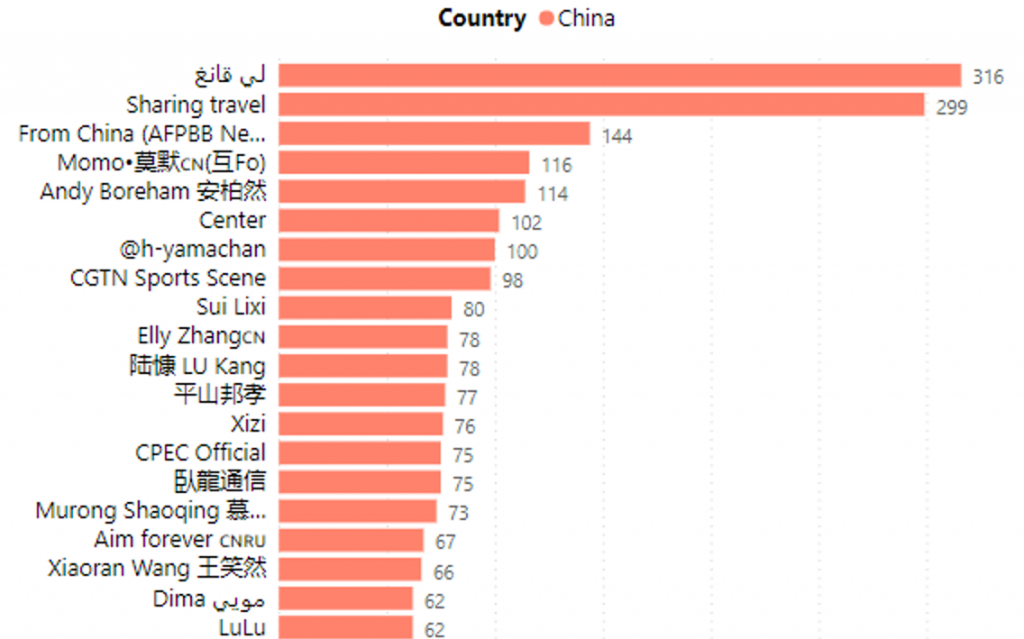
Figure 19: Non-monitored accounts most retweeted by monitored Chinese media and diplomatic/government accounts in May 2022
The most retweeted accounts from monitored Chinese officials and state media reflect Beijing’s broader networking patterns on Twitter, from tourist/cultural accounts (sharing travel) to pro-Beijing western influencers (Andy Boreham) and anonymous (and now suspended) accounts (Elly Zhang). In addition, Chinese officials amplified a few colleagues new to the platform, including Lu Kang, China’s ambassador to Indonesia who joined Twitter in April 2022 and has already amassed for than 17,000 followers.
Most Retweeted Tweets
The following charts display the Tweets made by monitored accounts that have received the most retweets during the previous month. Non-English Tweets are displayed in English using Microsoft’s Translator API.
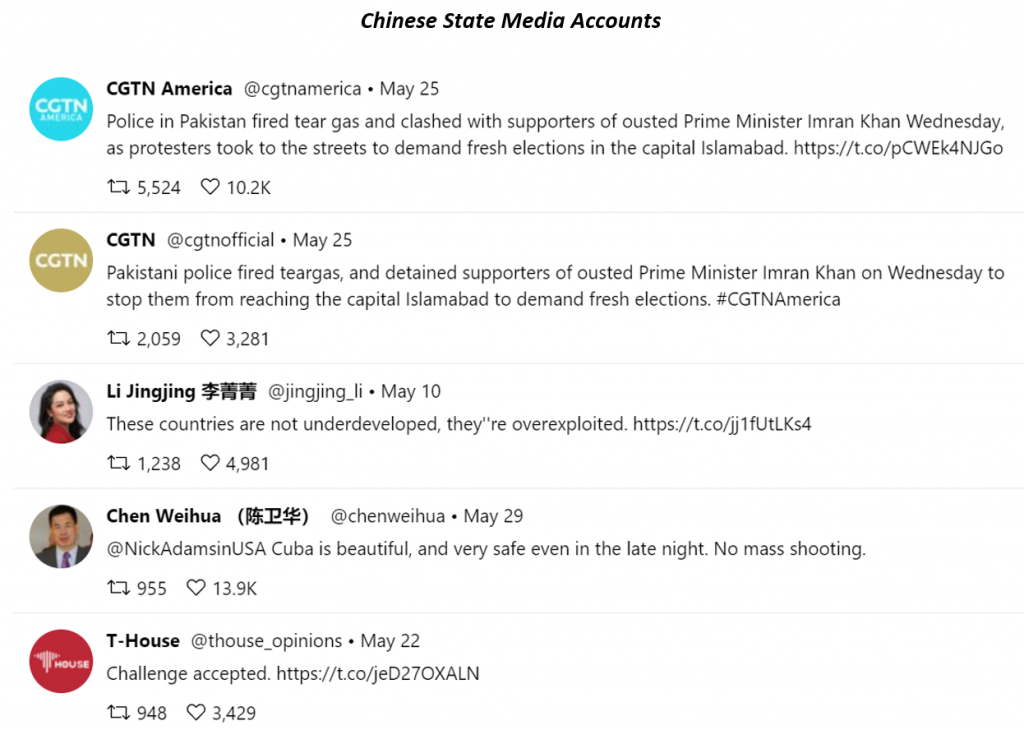
Figure 20: The most retweeted tweets from Russian state media accounts in May 2022
The top five tweets illustrate many of the recurring themes in Chinese messaging, including criticism of the United States and attempts to appeal to the Global South by tweaking historical resentments towards North America and Europe. China Daily’s Chen Weihua is one of China’s most visible media personalities on Twitter and one of the United States’ most dogged critics, never missing a chance to pour oil on the country’s most divisive issues, in this case gun violence after the Uvalde school shooting. As previously noted, the high engagement of tweets related to Pakistan is also in keeping with China’s focus on the country in its social media outputs.
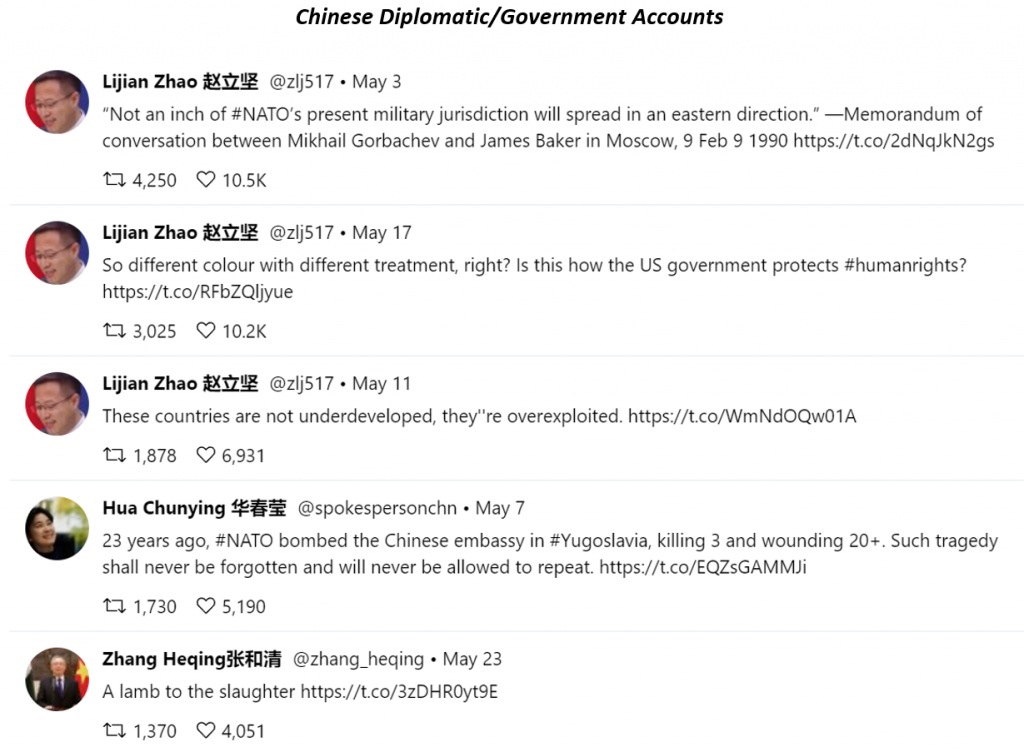
Figure 21: The most retweeted tweets from Chinese diplomatic/government accounts in May 2022
The top diplomatic tweets in May were all produced by China’s top “wolf warrior” influencers. Zhao Lijian accounted for more than half of the top tweets last month, highlighting his importance in the Chinese propaganda network on Twitter. Coincidentally, the third tweet most retweeted tweet from diplomatic accounts is identical to the third most retweeted tweet from state media accounts, highlighting the very high level of narrative convergence between Chinese diplomats and their state media counterparts. The first, fourth, and fifth most retweeted tweets illustrate the foreign policy offensive that Chinese diplomats have waged against NATO and the United States since Russia invaded Ukraine, in what is best described as “pro-Russian neutrality.”
YouTube Metrics
This section summarizes the outputs of video content uploaded to CGTN and CGTN America’s YouTube channels. YouTube videos over 20 minutes in length were not included. In total, the dashboard collected 483 videos that garnered 1,107,924 views, 13,863 comments, and 33,647 likes (engagement metrics accurate as of early June).
YouTube: Most viewed videos
The following chart displays the most viewed videos posted to CGTN and CGTN America’s YouTube channels over the previous month. Additional engagement metrics including likes, dislikes, and comments are also provided. Engagement metrics are accurate as of early June.

Beside the characteristic glorification of China’s latest scientific and technological achievements, coverage of the war in Ukraine stands out, with more illustrations of “pro-Russian neutrality.” From “Maslak’s War Diaries” (filmed by a crew embedded with the pro-Russian militias in Eastern Ukraine) to segments highlighting the evacuation of civilians under the supervision pro-Russian troops, CGTN consistently presents the war from a Russian perspective.
YouTube: Most Mentioned Countries
The following chart displays the countries most mentioned in CGTN and CGTN America videos during the past month. Country data is extracted from titles and excerpts posted to each video on YouTube, meaning that countries that are referenced in a video segment but that do not appear in the description or title will not be included.
Special territories and regions (e.g., Hong Kong and the EU) are included as individual entities in the country data. The chart aggregates all mentions of a country, including alternative country names, under that country’s official name (e.g., mentions of US, USA, U.S., and America are all included in tabulations for the United States of America).

Figure 22: The most mentioned countries in CGTN (dark red) and CGTN America (pink) videos in May 2022
While the prominence of the United States in CGTN YouTube videos is unsurprising given the inclusion of CGTN’s U.S-centric channel, CGTN America, it is notable that the United States was also mentioned more often than either Ukraine or Russia by CGTN’s flagship international outlet in May.
YouTube: Top Categories
The following chart displays the news categories covered most often in CGTN and CGTN America YouTube videos during the previous month. Classification of videos is determined by a machine learning algorithm based on a list of pre-determined news categories. Videos can have multiple classifications or no classifications if the confidence score is below a certain threshold.
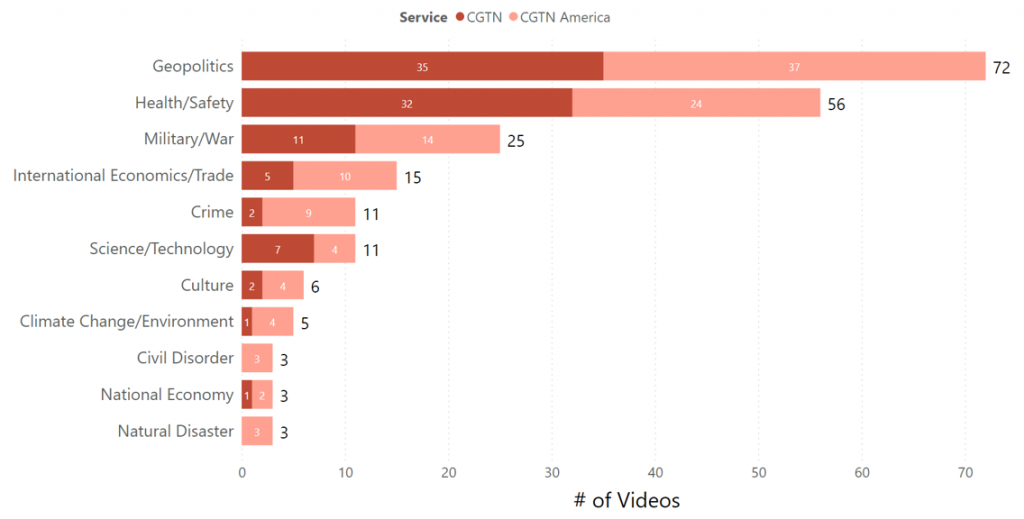
Figure 23: The top news categories for CGTN (dark red) and CGTN America (pink) in May 2022
While the war in Ukraine explains the large proportion of geopolitics and military-related videos, China spent much of May struggling to rein in Covid outbreaks, most notably in Shanghai, explaining why much of Chinese state media’s video content remained focused on health issues.
Facebook Metrics
This section provides a summary analysis of Russian state media and diplomatic/government Pages on Facebook during the previous month. Data is sourced from CrowdTangle, a Facebook-owned data analysis tool that provides insights into public content posted to Facebook. *NOTE—CrowdTangle data will be incorporated into the public dashboard in the summer of 2022.
Facebook: Most Interactions
The following chart displays the Russian state media and diplomatic/government Pages on Facebook with the most interactions (reactions, comments, and shares) during the previous month. Though sorted by interactions, the chart also displays the average number of posts per day, page followers, and interaction rates (a calculation of total interactions divided by the number of posts and the number of followers of a Page), all of which are important metrics to contextualize the results.
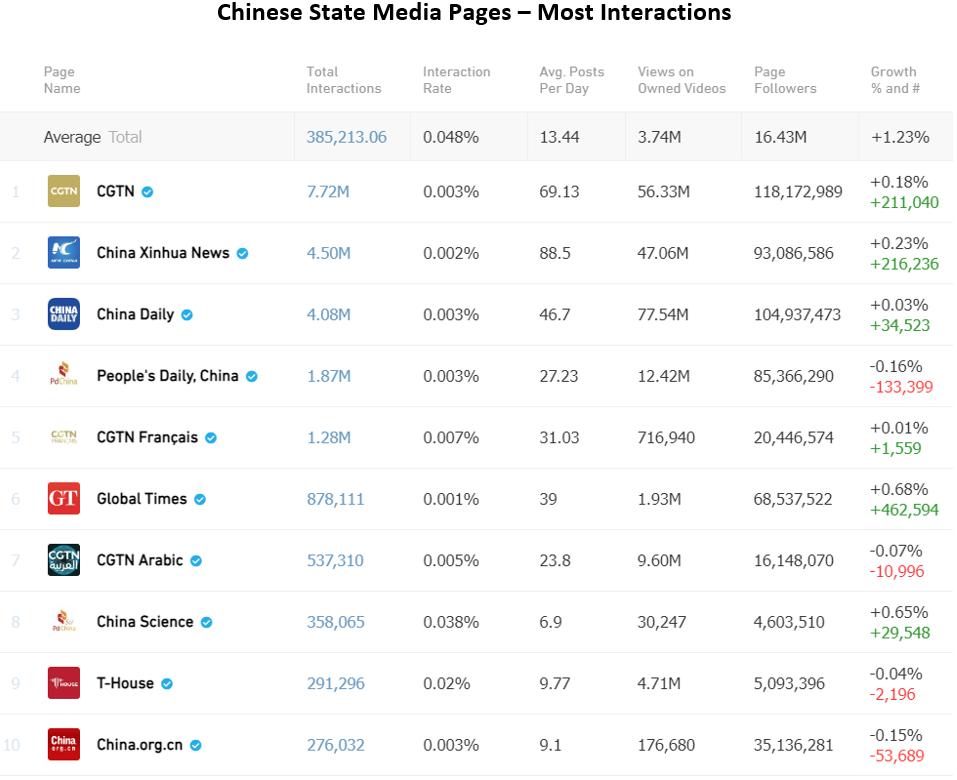
Figure 24: Chinese state media pages with the most total interactions on Facebook in May 2022
While Chinese state media Facebook pages have huge amounts of followers, they also have relatively low interaction rates, prompting questions about the authenticity of those vast follower counts. Still, China’s four main international broadcasters outperformed their Russian counterparts in terms of total interactions in May.
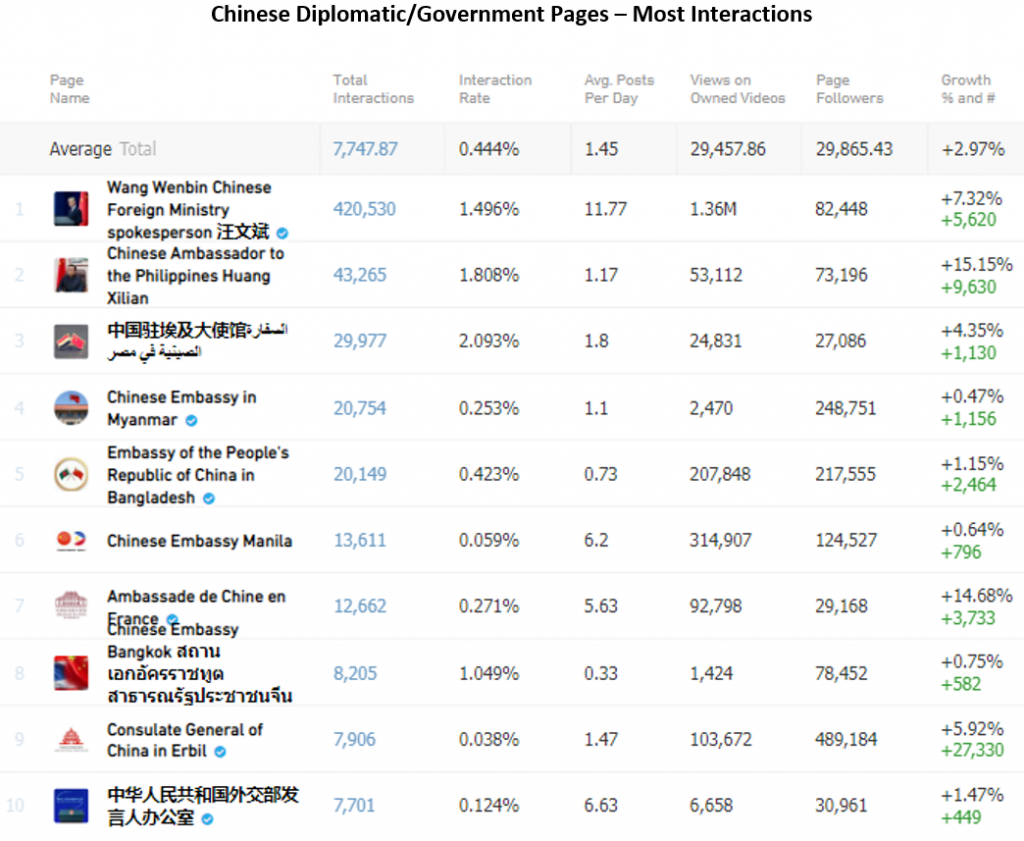
Figure 25: Chinese diplomatic pages with the most total interactions on Facebook in May 2022
Chinese diplomats have yet to establish the same level of engagement on Facebook that they enjoy on Twitter, largely due to the absence of China’s most prolific Twitter personalities on the platform. Wang Wenbin, China’s MFA spokesperson, received significantly more engagement than the next closest Chinese diplomatic and embassy accounts. Somewhat oddly, the Page affiliated with China’s Consulate General in Erbil, Iraq has nearly twice as many followers as the next closest diplomatic Page, once again calling into question the authenticity of China’s follower numbers on Facebook.
Facebook: Pages with the Largest Percentage of Growth in Followers
The following chart displays the Chinese state media and diplomatic/government Pages with the largest percentage growth in followers during the previous month.
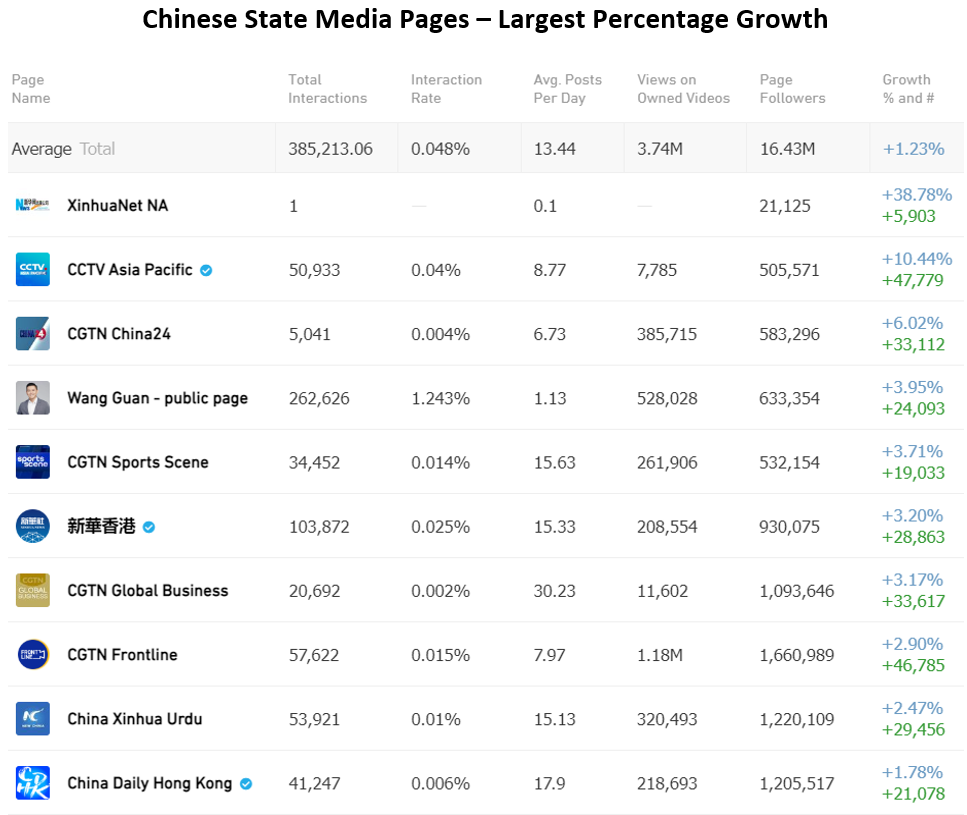
The Chinese media Pages with the most followers gained by percentage in May were, generally speaking, Pages with relatively low follower numbers that saw modest gains in total followers.

Figure 26: Chinese diplomatic and government pages with the largest percentage growth in followers on Facebook in May 2022
The Chinese Embassy in South Africa was the fastest growing Facebook presence out of all Chinese diplomatic entities, likely due in part to its relatively high activity level (the embassy posted more than 3 times per day, roughly double the average of all diplomatic accounts). The Chinese Embassy in France, an embassy known for its combative style on Twitter, also saw notable gains in May.
Facebook: Most Commented Posts (by Total Interactions)
The following posts received the most comments on public Chinese state media and Chinese diplomatic/government Facebook Pages during the previous month. Posts are segmented by all Chinese state media pages, Chinese state media Pages specifically targeting audiences in the United States (for example, CGTN America), and Chinese diplomatic/government Pages.
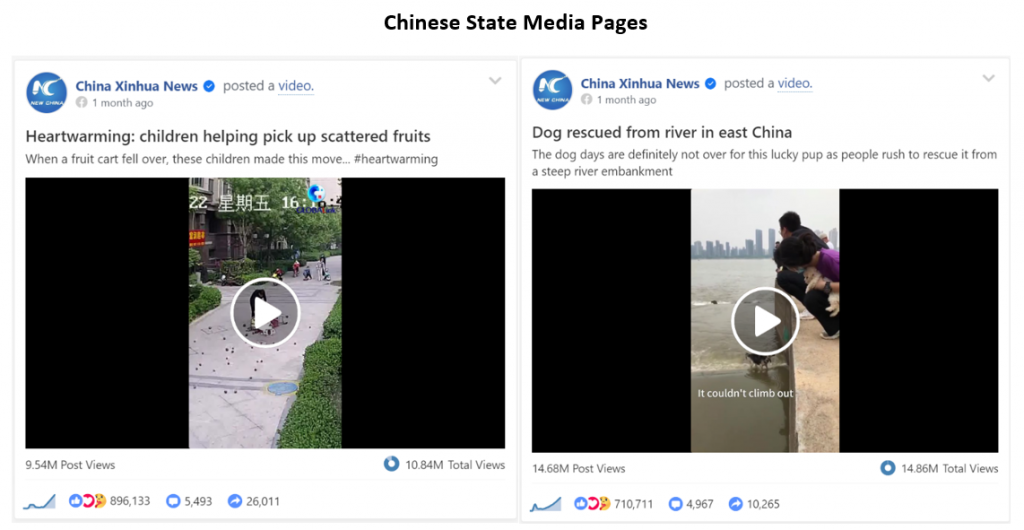
Figure 27: The top two most commented posts on Chinese state media Pages in May 2022
The most commented posts are representative of the type of content pushed by Chinese state media on Facebook globally: harmless, clickbait style videos that have the potential to go viral and capture audience share. The next three most commented on posts, however, all featured coverage of Russia’s V-Day parades and celebrations.
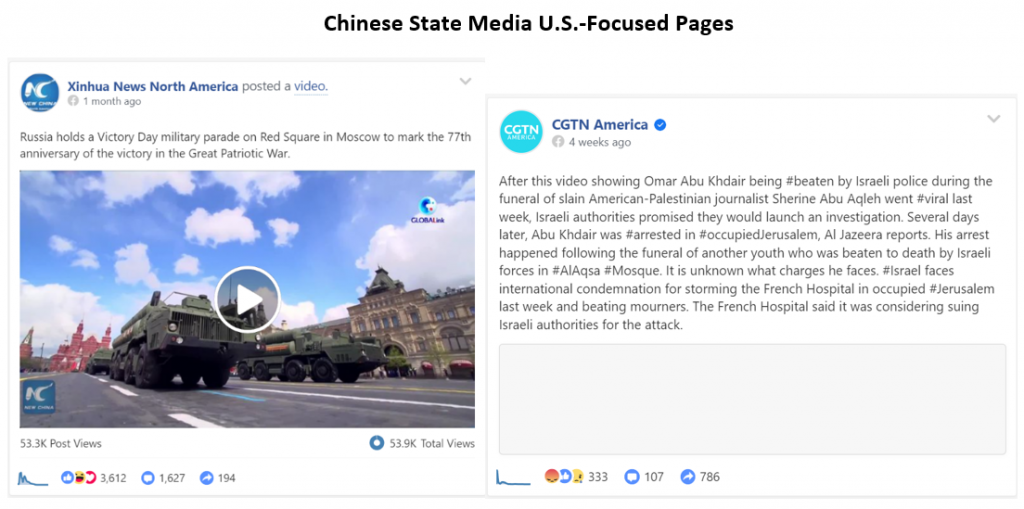
Figure 28: The top two most commented posts on Chinese state media U.S.-focused Pages in May 2022
China’s most commented-on content on its U.S.-facing Pages was more overtly political, with posts about Russia’s military parades and allegations of police brutality in Israel.

Figure 29: The top two most commented posts on Chinese diplomatic/government Pages in May 2022
China’s top diplomatic posts featured promoted China’s diplomatic relationship with Egypt and one of China’s Belt and Road projects in Bangladesh.
Iran
Twitter Metrics
This section analyzes the top accounts affiliated with and outputs from Iranian state media and diplomatic/government Twitter accounts in May 2022. Non-English Tweets are displayed in English using Microsoft’s Translator API. Engagement metrics are determined using Twitter’s public API and are up to date as of early June 2022.
In total, monitored Iranian accounts posted 20,470 tweets in May. Those Tweets were retweeted and liked, respectively, 104,814 and 581,684 times during the month.
Most Retweeted Accounts
The following charts display the most retweeted Iranian state media and Iranian diplomatic/government accounts during the past month. Favorites and total tweets are also displayed.
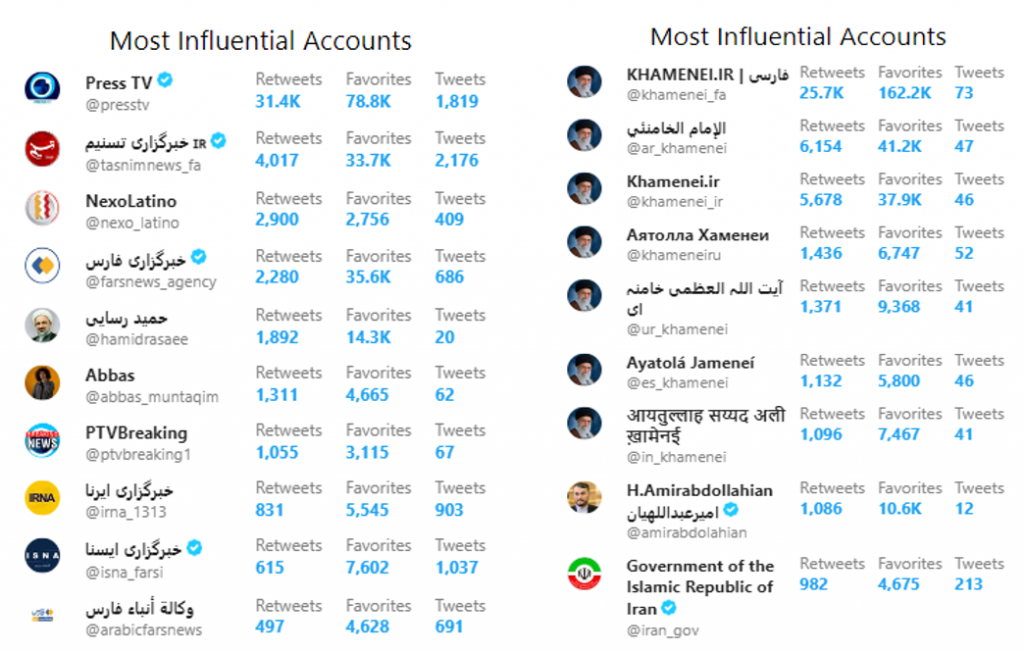
Figure 30: The most retweeted and liked Iranian state media (left) and diplomatic/government accounts (right) in May 2022
Among state media accounts, PressTV remains dominant, accounting for more retweets than the rest of the monitored media accounts combined. PressTV produces English-language content and despite tangles with the FBI, which seized one of their servers back in June 2021, remains the flagship vehicle for pro-regime messaging around the world. The rise of Nexo Latino, though, demonstrates that Iran is trying to rebuild its Spanish-language followership (most likely in violation of platform policies) after HispanTV was removed from YouTube, Twitter, and Facebook in 2019, 2020, and 2022, respectively.
Among government accounts, the Supreme Leader remains by far the dominant force, even when divided among his (in order of greatest engagement) Farsi, Arabic, English, Russian, Urdu, Spanish, and Hindi accounts. Cleric and hardline propagandist Rasaee and Foreign Minister Amir-Abdollahian also generated respectable engagement, but only a fraction of Khamenei’s.
Most Followers Gained
The following charts display the state media and diplomatic/government accounts with the largest change in followers from May 1 to May 31, 2022.
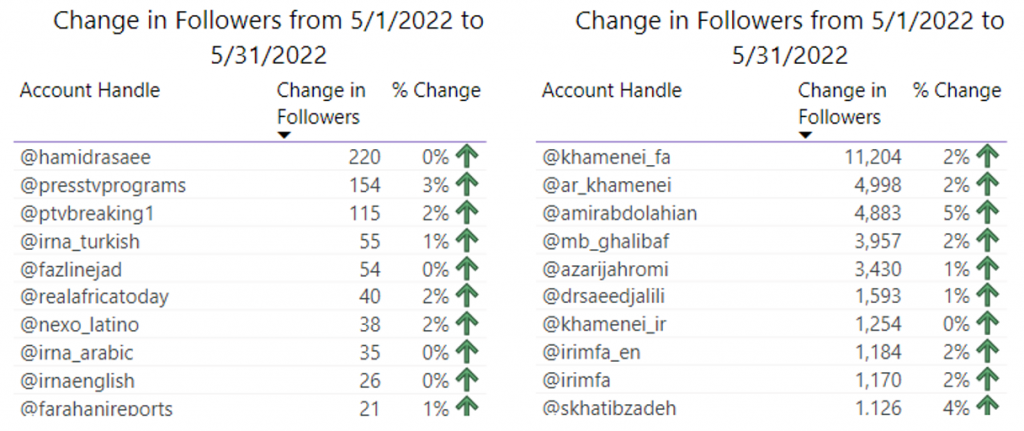
Figure 31: The Iranian state media and diplomatic/government accounts with the largest change in followers in May 2022
Iranian state media assets achieved, at best, modest gains in May, reflecting Iran’s struggle to find an audience on the platform. Diplomatic and government accounts saw greater growth, led by Khamenei’s Farsi language account. Iran’s foreign minister, Amir Abdolahian, and foreign ministry spokesman Saeed Khatibzadeh saw their follower numbers jump by five and four percent respectively.
Most Mentioned Countries
The following chart displays the countries most mentioned in Tweets during the past month. Special territories and regions (for example, Hong Kong and the EU) are included as individual entities in the country data. The chart aggregates all mentions of a country, including alternative country names, under that country’s official name (for example, mentions of US, USA, U.S., and America are all included in tabulations for the United States of America).
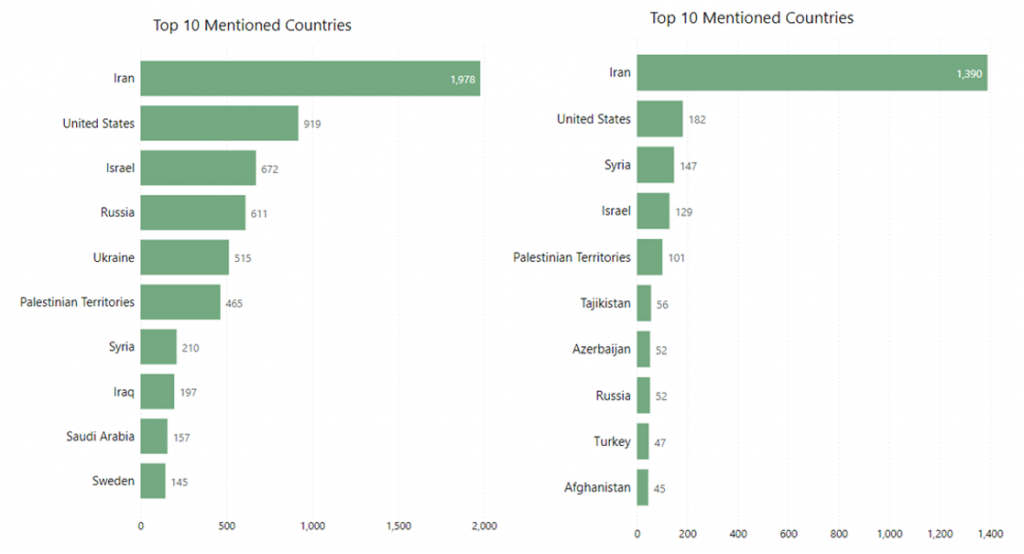
Figure 32: The most mentioned countries in tweets from Iranian state media (left) and diplomatic/government accounts (right) in May 2022
As usual, Iran, the United States, and Israel were the first, second, and third most mentioned countries, respectively. This reflects Iranian state messaging, which generally casts world affairs in terms of Iran (and sometimes a small number of other countries like Venezuela, Syria, Russia, and/or China) as the center of resistance against a global cabal led by the United States and Israel. The Russian invasion of Ukraine elevated the mentions of those countries among regime-backed media outlets.
Most Retweeted Accounts
The following charts display the accounts that have been retweeted most often by accounts monitored on the dashboard during the past month. The first chart displays the monitored accounts most retweeted by other monitored accounts (for example, a diplomatic account retweeted by other diplomatic and state media accounts). The second chart displays the non-monitored accounts most retweeted by monitored accounts (for example, an independent media outlet or unaffiliated individual retweeted by diplomatic and state media accounts). Occasionally, accounts that should be monitored by the dashboard appear in the non-monitored retweet list, either because those accounts are new or were not previously identified. Those accounts are subsequently added to the relevant Hamilton account list.
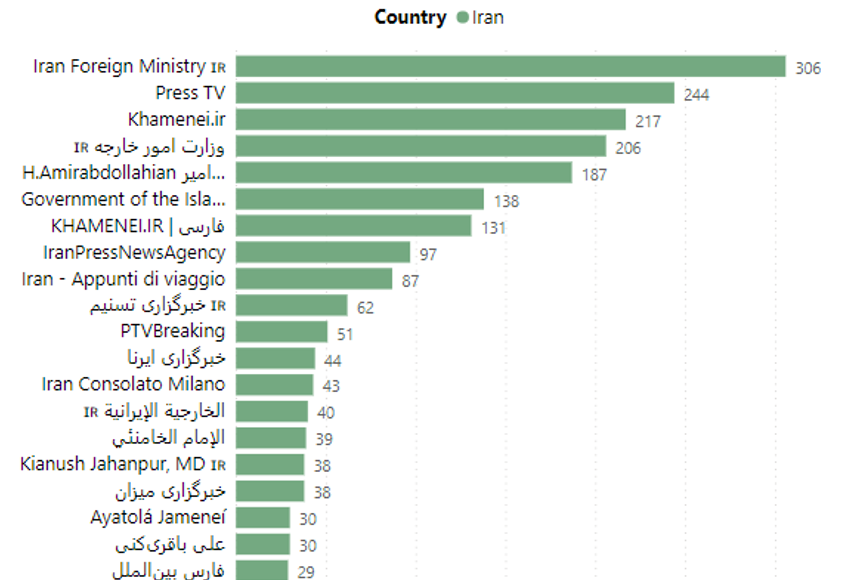
Figure 33: Monitored Iranian media and diplomatic/government accounts most retweeted by other monitored Iranian media and diplomatic/government accounts in May 2022
The most retweeted monitored accounts included the Foreign Ministry, PressTV, and Khamenei himself. Several diplomatic accounts, including two based in Italy, also achieved substantial numbers of retweets, as did Dr. Jahanpur, the Spokesman for the Ministry of Health and Medical Education.
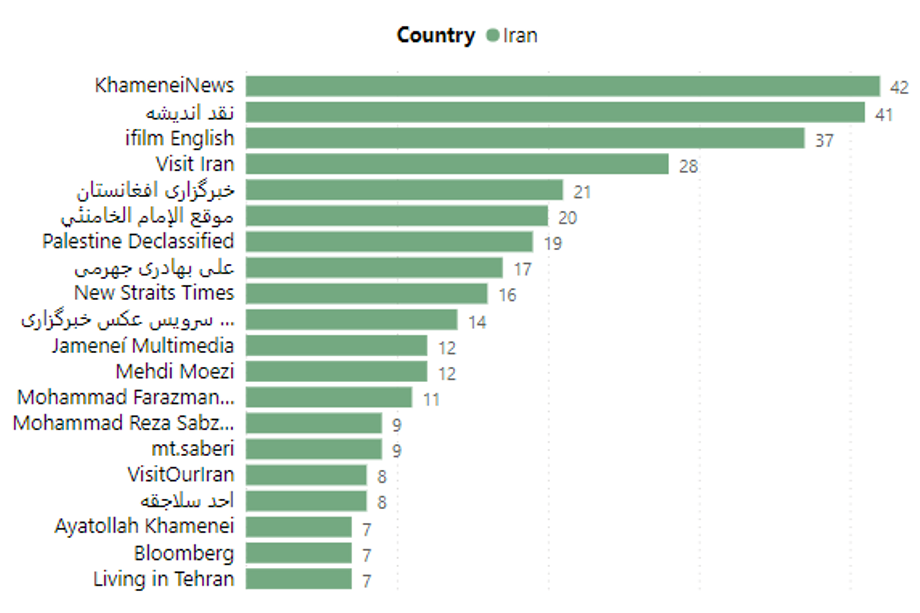
Figure 34: Non-monitored accounts most retweeted by monitored Iranian media and diplomatic/government accounts in May 2022
Among non-monitored accounts, low-followership (and possibly state-backed media accounts) like KhameneiNews and Palestine Declassified (which is a division within PressTV and will be included in our list of monitored accounts) were among the ten most retweeted accounts. Many other accounts were state affiliated or quasi-state affiliated public diplomacy accounts, like Visit Our Iran.
Most Retweeted Tweets
The following charts display the Tweets made by monitored accounts that have received the most retweets during the previous month. Non-English Tweets are displayed in English using Microsoft’s Translator API.
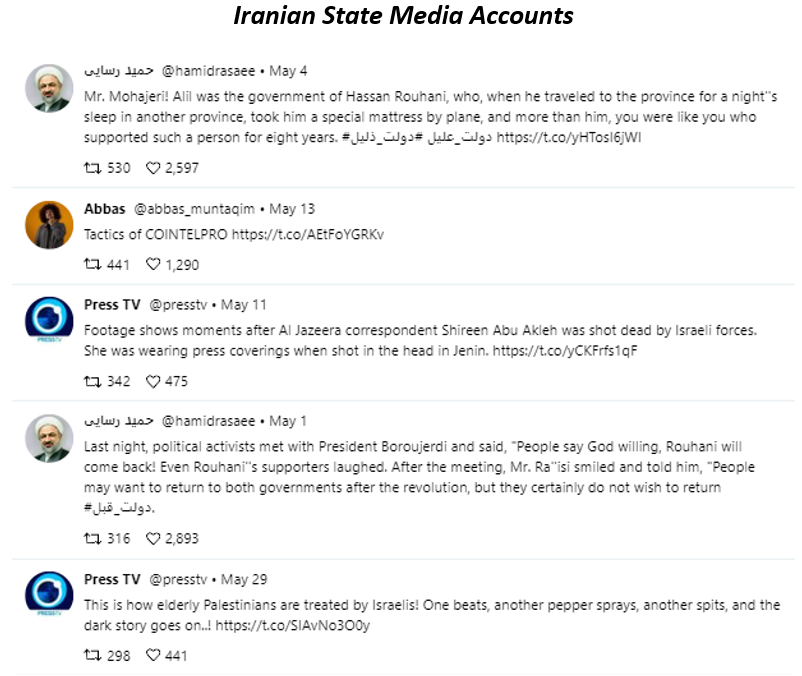
Figure 35: The most retweeted tweets from Iranian state media accounts in May 2022
One of the most retweeted tweets from state media accounts came from a PressTV reporter and podcaster named Abbas Muntaqim, who discussed the Cold War-era investigation of Black nationalists by U.S. intelligence. Another came from propagandist and cleric Hamid Rasaee, who blasted alleged excesses committed by members of former president Rouhani’s regime. Other high-engagement tweets focused on the Israeli-Palestinian conflict, including the death of celebrated Palestinian journalist Shireen Abu Akleh.
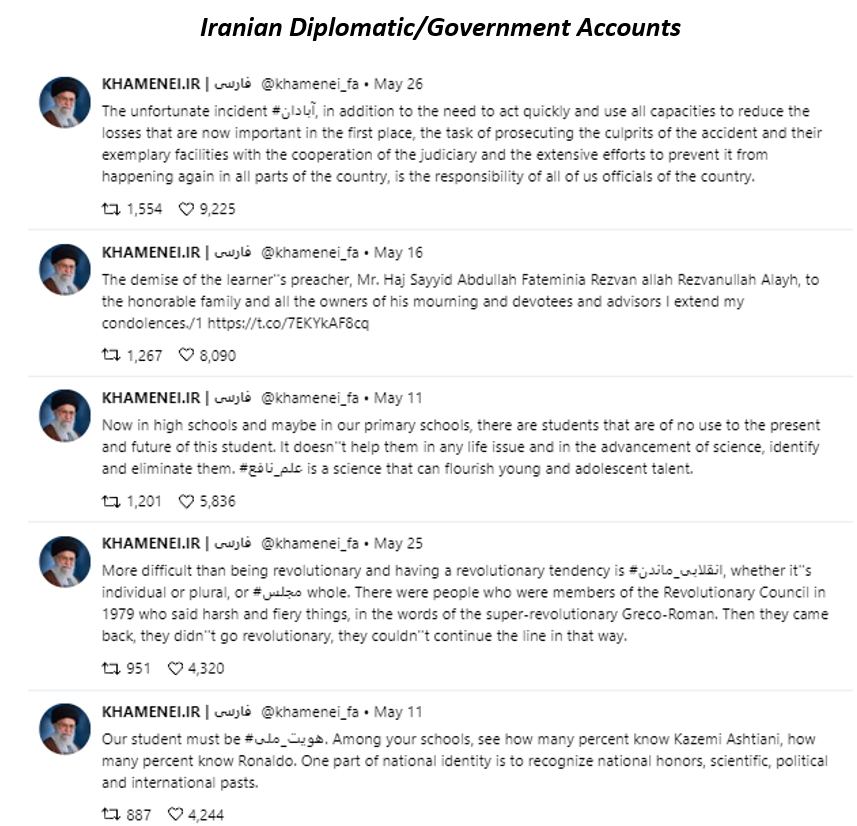
Figure 36: The most retweeted tweets from Iranian diplomatic/government accounts in May 2022
All five of the most engaged-with Tweets from Iranian government officials came from Supreme Leader Khamenei’s Farsi language account. They ranged in topics from the death of a prominent preacher to the progress of educational reforms and a catastrophic building collapse in the city of Abadan.
YouTube Metrics
The Hamilton dashboard currently does not track any Iranian state media outlets on YouTube.
Facebook Metrics
Due to restrictions on Iranian state media and diplomatic Pages on Facebook, the few Iranian properties that exist on the platform receive negligible interactions. As a result, we did not conduct analysis of Iran’s Facebook performance.
Rachel Clavette contributed to this report.
The views expressed in GMF publications and commentary are the views of the author alone.



